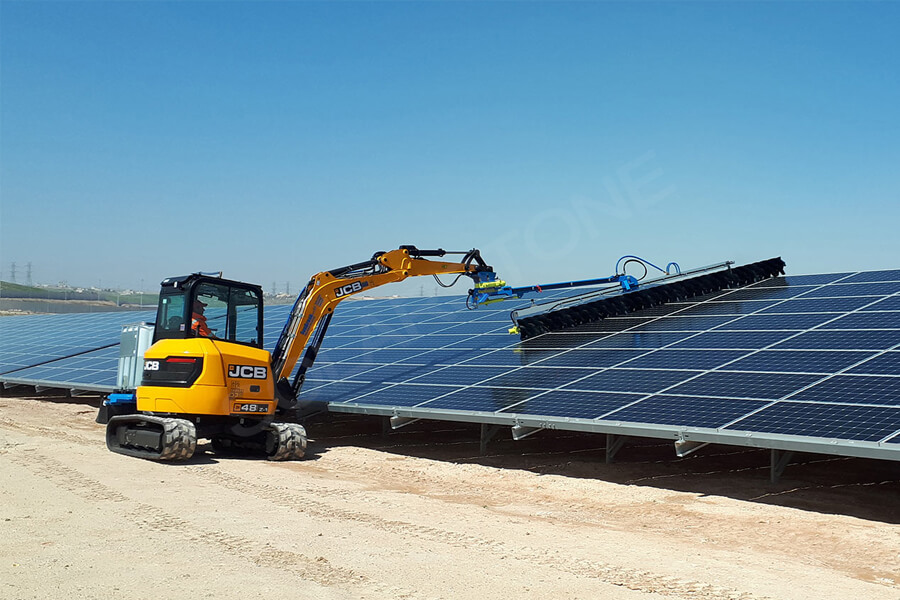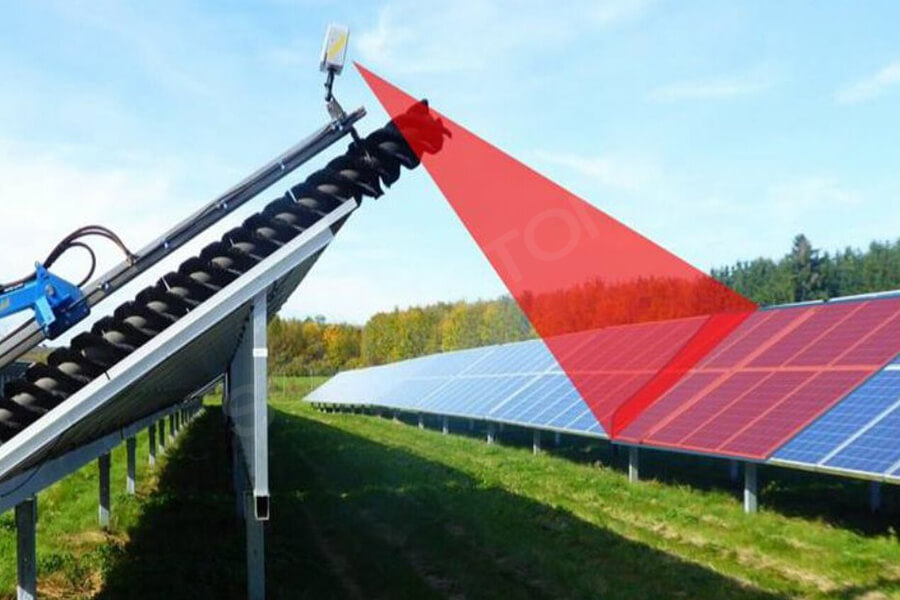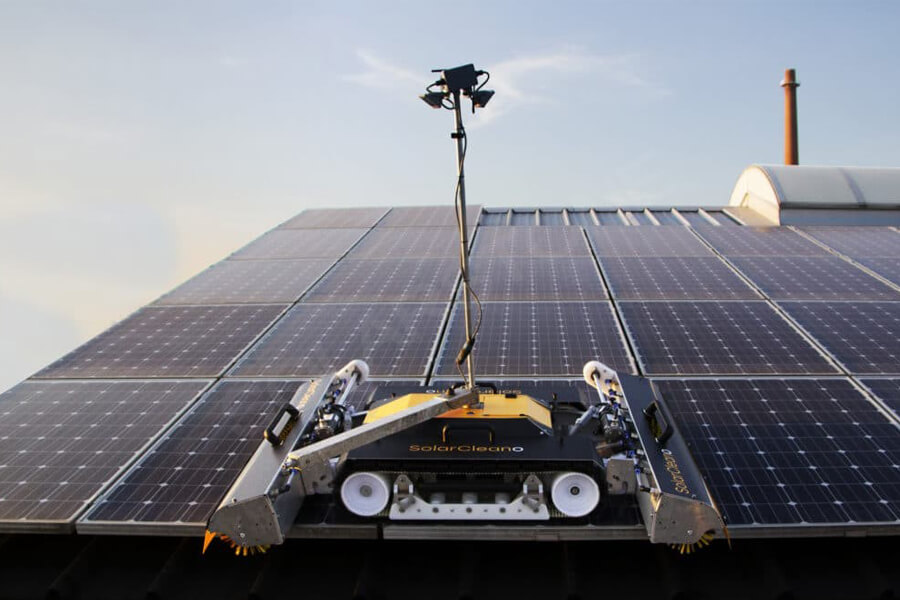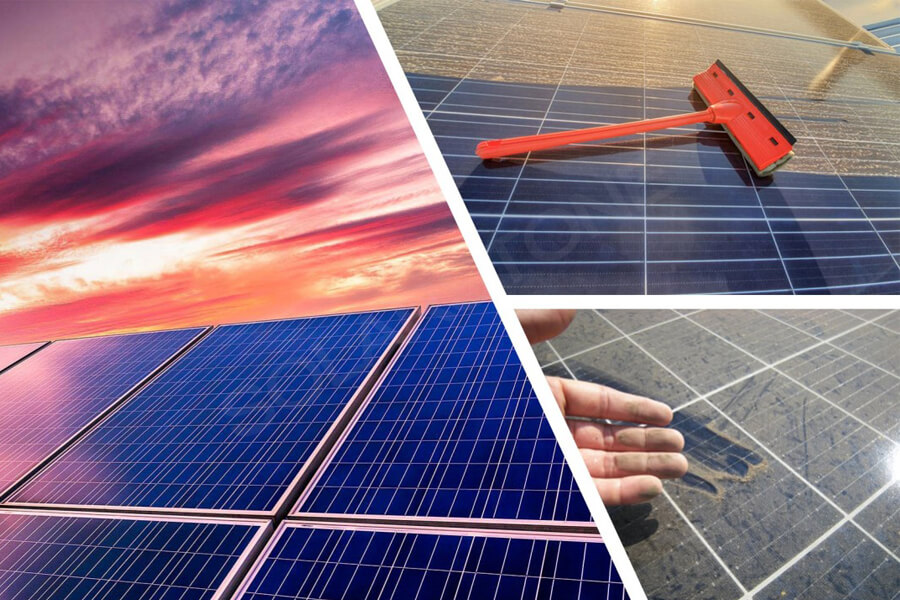Photovoltaic power generation is a technology that utilizes the photovoltaic effect of semiconductor interfaces to directly convert solar energy into electrical energy, with significant energy, environmental, and economic benefits.
Photovoltaic panels convert solar energy into electricity, providing renewable energy for our daily lives and industrial production. Do you know that solar photovoltaic panels also need to be cleaned?
Part 1 Why clean photovoltaic panels?
The main principle of photovoltaic power generation is the photoelectric effect of semiconductors, but it is greatly affected by the natural environment, especially the accumulation of dust or snow, which can greatly reduce the power generation efficiency of photovoltaic modules.
If manual cleaning and dust removal operations are not carried out, the photoelectric conversion will decrease by about 20 to 40% under the long-term influence of dust accumulation. (Data for reference only, actual situation subject to individual circumstances)
In addition, the designed service life of photovoltaic glass is 25 years. During the design life, if the photovoltaic modules are not well protected, there may be a problem of module attenuation of up to 20%.
Why do companies need to clean photovoltaic panels?
1. Dust accumulation has an impact on photovoltaic panels
It is easy to cause a decrease in the intensity of light shining on the photovoltaic cell, a weakening of the photoelectric effect, and thus a reduction in power generation.
2. The influence of leaves, soil, and bird droppings
The pollution on the surface of photovoltaic modules, due to their close proximity to the photovoltaic cells, can form shadows and create a “hot spot effect” in local areas of the modules, thereby reducing their power generation efficiency and even burning them out.
Part 2 What are the main methods for cleaning photovoltaic panels?
There are two main methods for cleaning photovoltaic panels: manual cleaning and robot cleaning
Manual cleaning: This is a traditional cleaning method that requires technicians to manually perform it. The advantage of manual cleaning is that it can clean photovoltaic panels more finely, allowing for better inspection and handling of issues with the photovoltaic system, such as damaged wires or loose joints.
This cleaning method is relatively flexible and can be adjusted according to specific situations. However, manual cleaning requires a large amount of manpower input, high labor intensity, high cost, and it is difficult to ensure the repeatability and consistency of cleaning quality.
Robot cleaning: With the development of robot technology, more and more companies are adopting robots to clean photovoltaic panels. The advantages of robot cleaning are high efficiency, speed, and safety. Due to the presence of various sensors and control systems, robots can perform fast and accurate cleaning without damaging the surface of photovoltaic panels.
In addition, robot cleaning can reduce manpower input, improve cleaning efficiency, reduce maintenance costs, and have good cleaning quality and consistency. However, correspondingly, robot cleaning requires higher capital investment and regular maintenance and upgrades.
Overall, both manual cleaning and robot cleaning have their advantages and disadvantages. Enterprises can choose the appropriate cleaning method according to their own needs and actual situation.
Regular cleaning of photovoltaic panels is very important. How often should photovoltaic panels be cleaned? The answer to this question is not fixed, as it depends on many factors such as the installation location of the photovoltaic panel, the cleanliness of the surrounding environment, weather conditions, and so on.
Generally, it is recommended to clean photovoltaic panels at least once a year to ensure their power generation efficiency and lifespan. If photovoltaic panels are installed in highly polluted environments such as roadsides, desert areas, and areas with high agricultural dust, they need to be cleaned more frequently.






